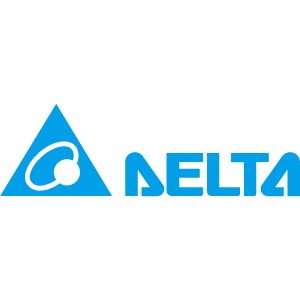Throughout its more than 100-year history, Rush Health Systems has expanded its services to address the growth in its community and the needs of the families that they serve, to become one of the largest healthcare providers and employers in the East Mississippi and West Alabama regions of the United States of America.
Rush Health Systems
Rush Health Systems is comprised of seven hospitals and over 30 clinics, historically noteworthy among them, the Rush Foundation Hospital, a 215-bed, acute-care facility, founded in 1915 that formed the beginnings of Rush Health Systems.
So, when Rush Foundation Hospital, located in Meridian, Mississippi, decided it needed to expand its operations in 2012, it fell upon Fred Rogers, Vice President, Chief Resource Officer, and Facility Manager for Rush Health Systems, to address the need for new heating equipment.
Heating construction and renovation
Rush’s new heating construction and renovation was done over a four-year period
Rush’s new heating construction and renovation were done over a four-year period, when Fred Rogers began the equipment selection process, with the assistance of Ernie Strahan from Delta Thermal Solutions, Inc., which is Fulton Heating Solutions Inc.’s (Fulton) authorized representative in the US state of Mississippi.
Ernie Strahan provided initial specifications, testing, and staff training for the new boilers, and Perry Atherton of Edmonds Engineers (Edmonds Engineering, Inc.) designed the system upgrades.
Fulton heating products
Fred Rogers said, “I had originally been looking at other equipment, but when Ernie and Perry introduced me to the Fulton product line, I was very impressed at how they were put together and tested. Fulton also won out, when it came to cost, as well as efficiency.”
But for Fred, the challenge of installing new boilers had only just begun, as space limitations in the boiler room were so extreme that Rush Foundation Hospital was required to petition its local city council, to purchase a part of the city’s right of way (sidewalk), so that they could extend their boiler room out to the street.
Piping, pump replacement, and cabinetry work
For the job, Rush Foundation Hospital had to close their sidewalk, get a foundation put in and perform a large additional amount of piping, pump replacement and electrical, and mechanical cabinetry work.
This was done while needing to keep the old boilers running until the new Fulton boilers could be installed and brought on-line. Fulton boilers saved on space because they were vertical in size and smaller than most other horizontal options.
Fulton boilers installed
The two Fulton VMP-150 (Vertical Multi Port) boilers installed are dual-fired to burn diesel fuel as backup (required by code for redundancy), if natural gas is not available.
The following equipment was included to help the VMP boilers operate at their maximum possible efficiency:
- Synex Controls ModSync sequencing system - In addition to providing a touchscreen interface to important status information, this system minimizes boiler cycling and maintains even operational usage, across the equipment, thereby increasing energy savings and boiler life expectancy.
- Condensate return and feed-water system – This system returns the residual heat energy of the condensate (spent steam) to the boiler tank, so that less energy is needed to heat the boiler feed-water.
Efficient boiler system
Fred Rogers sized the boiler system up, so that the hospital would have enough capacity for not just now, but the next 15 years, as far as new buildings and projects that might come along.
“We had some issues at first,” said Fred Rogers, adding “But the Fulton people worked with us, Ernie worked with us and right now, we’re very happy with them. The units are easy to access for troubleshooting, if needed and training time for my maintenance guys is short, as they’re easily guided through it.”
Boilers checked and serviced regularly
One Fulton boiler backs up the other, while maintaining high efficiencies through [the] use of a ModSync control system"
Fred Rogers also swaps the boilers every day (runs one on one day, the other on the next day), so as to ensure that any issues that arise with one boiler are quickly identified and resolved, while still being backed up by the other boiler. He also has them configured, so that if a high demand exists that can’t fulfill the needs of the facility, the other boiler automatically fires up.
“As far as redundancy,” said Ernie Strahan, adding “They’ve never lost a load or had an outage crisis. One Fulton boiler backs up the other, while maintaining high efficiencies through [the] use of a ModSync control system that allows the boilers to communicate with each other. And, there are three pumps, so there’s always been a backup pump.”
Fred Rogers adds, “It’s basically maintenance-free right now, other than checking to make sure the water level is correct, especially after having put in new pumps to feed the boilers and adding a whole new chemical treatment system. The new Fulton boilers have also reduced gas consumption and produce better steam. We don’t have boilers going down when we need steam.”
High-Quality Steam
Like most hospitals, Rush Foundation Hospital transfers its boiler-generated steam via a piping system, to distribution points used for central heating, hot water heating, laundry, food service, autoclaves, and other steam sterilizers, in the surgery area, used for cleaning instruments prior to reuse, a critically important function.
The Fulton boilers at Rush Hospital also supply high-pressure steam to the labs
The Fulton boilers at Rush Hospital also supply high-pressure steam to the labs, where technicians autoclave (sterilize) agar plates (Petri dishes containing growth medium), before using them to test for staph and other contagious organisms that could cause infections, which is another critically important function of boiler steam and part of the strict quality control procedures put in place, at the Rush Foundation Hospital.
So, what does quality mean at Rush? According to Rush Health Systems’ charter, ‘Quality is continually improving our service, to meet the needs and exceed the expectations of our patients, physicians, employees, and other customers that we serve.’ Fulton is honored to be part of the Rush Health Systems’ story.
Steam heat used in critical sterilization procedures
Besides being non-toxic and relatively inexpensive to produce, steam heat (as opposed to dry air) is used for critical sterilization procedures in hospitals, because water vapor transfers heat much more efficiently than dry air.
This type of steam is also called ‘saturated steam’, because the space that it occupies contains the maximum amount of gaseous water (moisture) it can hold, without producing liquid condensate. No bacteria or other living micro-organisms can survive direct exposure to saturated steam at 250 °F (120 °C), for longer than 15-20 minutes.


















